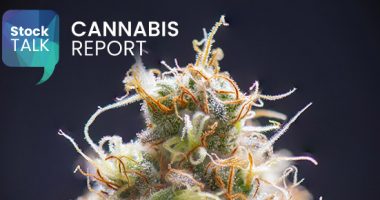Here with The Market Herald Canada to talk about North Arrow Minerals (TSXV:NAR), a company focusing on lithium exploration in Northern Canada, is none other than President and CEO Ken Armstrong.
TMH: I think the last time we spoke to you, Ken, was back in August. So, for all those wanting to add an exploration company to their portfolio, can you recap what North Arrow Minerals does best?
Armstrong: Absolutely. Like you said, we’re an exploration company, trading as NAR on the TSX Venture Exchange. We’re a small group based in Vancouver, and we look for mineral deposits that could become mines. Most of our work is in the Northwest Territories and Nunavut. We have a strong portfolio of properties.
We have some gold and diamond properties, but our focus in 2023 has been entirely lithium. We’ve acquired three projects that have spodumene pegmatite targets on them that are drill ready. And we also have some more greenfield ideas of properties, like our Bathurst project that could become brand new spodumene pegmatite discoveries.
TMH: And what are some current projects that are underway in the Northwest Territories? And I understand some results were announced this week, so please share some of the key highlights.
Armstrong: I think when we did talk in August, we were talking then about drilling two of our projects at LDG and MacKay. Unfortunately, that didn’t happen because of the wildfire situation and the evacuation of Yellowknife but once everybody was able to safely get back, we were able to get in the field and do a couple of weeks of work on those properties and those are the results that we reported last week. Some pretty strong results. Almost all of the assays returned, came back above 1 per cent Lithia or Li2O.
We made a new discovery. Our MK-3 pegmatite on our MacKay project where it was 14 of the 17 samples came back over 1 per cent. That included a 4-metre channel sample that returned 2.1 per cent. Li2O channel samples that are really important. Spodumene pegmatites can sometimes be hard to sample, and so it’s cut with a rock saw.
It’s very representative, so (we’re) very pleased to see that result At LDG. At our SD2 target area, we’ve extended mineralization over 260 metres northwards with three samples that return between 1.4 per cent and 3.1 per cent Li2O, so really solid results.
I think the two properties are close to each other and why we’re keen on them and why we like them so much is in a pretty short period of time, we’ve been able to identify spodumene pegmatites that are well mineralized on the properties. They’re wide, in some cases, up to 20 metres wide, 500 metres long, and lots of opportunity for them to be bigger.
The area is really flat. There’s a lot of overburden that could hide extensions of the pegmatites and they’re in a region that is geologically identical to what we see around Yellowknife where other companies are drilling targets and we think the size potential of the targets at LDG and MacKay are very similar to what other companies like Lift Power are finding when they drill around Yellowknife.
Then lastly, and a really important one on these properties, that they sit right along the alignment of the Winter Road that connects Yellowknife with the diamond mines to the north up at Lac de Gras (LDG). Being close to that transportation infrastructure is really important. You can see the road from the showings, in fact, one of their showings, “SD4,” on our LDG property, you can stand on the outcrop, and you can see the wind farm of Diavik on the horizon. Being so close to that mining infrastructure that’s already in place could be really important as we advance and drill these targets next year.
TMH: And with all your experience and history being in the Northwest Territories, how has that shaped where the company finds itself presently?
Armstrong: Well, it’s been really important. We saw this time last year, we saw sort of the surge in interest in lithium and that’s when we decided to acquire some of these properties.
We saw companies coming into the Yellowknife area, sometimes paying pretty hefty price tags to get into properties. And we knew of opportunities that were available for staking. That’s how we acquired our DeStaffany project, which is our third spodumene pegmatite property east of Yellowknife. It’s an area that we as a group evaluated for tantalum 30 years ago.
We knew the pegmatites are there. It was available for staking, so we acquired it and then even another good example is at LDG and MacKay, it was through our exploration database and just reviewing our information we had on file that we were able to realize that at LDG, which was our diamond property at the time, actually hosted spodumene pegmatites. And we were able to confirm that, we were able to confirm the pegmatites of MacKay (and) stake them.
So, with pretty modest cost of maybe $60,000, we were able to stake and acquire three lithium properties, which really compares very well to the prices paid by some other players to get into the lithium space.
TMH: What are some of the growth strategies that are in place?
Armstrong: I mean for us, growth is going to mean drilling. There are not many companies can say they have three different properties that have spodumene pegmatites on them. We have that. We have multiple targets on each of those properties. Permits are in place. We have an exploration camp at LDG, so now we’re just working at getting the funding in place to see those properties drilled.
Then, of course, (we’re) always looking at other ideas on the greenfield sides of new properties and new ideas like our Bathurst project, which are pegmatites that we staked, that are in a setting that geologically, again, is identical to what the setting is around Yellowknife, close to transportation infrastructure, very close to the facility of B2Gold, that they’re using to support the development of their Back River gold deposit. Looking at additional opportunities like that as well.
TMH: And before we leave you today, is there anything we missed that you would like to add?
Armstrong: I think maybe just more of even a general point for people who are interested in lithium, and what do grades mean and what’s an important number? I think it’s just important to note that that 1 per cent Li2O threshold is really important when looking at spodumene pegmatite deposit.
Spodumene, of course, that’s the mineral that we’re looking for. It hosts and it holds the lithium that we want to get at and spodumene and spodumene concentrates, there is a market for that.
It is a marketable product. So seeing grades over 1 per cent is important and for us then seeing consistent grades coming from all three of our projects, from MacKay, from LDG, from DeStaffany that are over 1 per cent, I think it’s important – and for people who are interested in lithium stories and companies that have some upside because they haven’t been drilled yet – then I think North Arrow should be on their watch list.
You can find North Arrow Minerals on the TSX Venture Exchange under the symbol NAR or head to its website northarrowminerals.com for more information.
Join the discussion: Find out what everybody’s saying about this stock on the North Arrow Minerals Bullboard investor discussion forum, and check out the rest of Stockhouse’s stock forums and message boards.
The material provided in this article is for information only and should not be treated as investment advice. For full disclaimer information, please click here.



